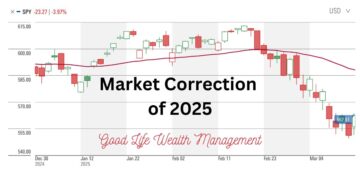The big surprise this week was that the new budget approved by Congress and signed by President Obama on Monday abolishes two popular Social Security strategies for married couples. The two strategies that are going away are:
1) File and Suspend. A spouse could file his or her application but immediately suspend receiving any benefits. This would enable the other spouse to be eligible for a spousal benefit, while the first spouse could continue to delay benefits to receive deferred retirement credits until age 70.
2) Restricted Application. Also called the “claim now, claim more later” strategy, this would allow a spouse to restrict their application to just their spousal benefit at age 66, while continuing to defer and grow their own benefit until age 70.
Both of these strategies were ways for married couples to access a smaller spousal benefit, while still deferring their primary benefits until age 70 for maximum growth. And now, these strategies will be gone in 6 months from today. It was estimated that these strategies could provide as much as $50,000 in additional benefits for married couples. Needless to say, people close to retirement who were planning on implementing these strategies feel disappointed and upset.
Some Baby Boomers have done a lousy job of saving for retirement and are going to be heavily reliant on Social Security. According to Fidelity Investments, the average 401(k) balance as of June 30 was $91,100 and their average IRA balance is $96,300. If an investor had both an average IRA and 401(k), they’d still have only $187,400. But those figures don’t tell the true depth of the problem facing our nation, because those “average balances” don’t count the 34% of all employees who have zero saved for retirement. For many retirees, savings or investments are not going to be a significant source of retirement income.
Looking at current beneficiaries, the Social Security Administration notes that 53% of married couples and 74% of single individuals receive at least 50% of their income from Social Security. For 47% of single beneficiaries, Social Security is at least 90% of their retirement income! As of June 2015, the average monthly benefit is only $1,335, so that should give you some idea of how little income many retirees have today.
Our country simply cannot afford to let Social Security fail, and yet the current approach is unsustainable. People think that Social Security is a pension or savings program, but it is not. It is an entitlement program where current taxes go to current beneficiaries. Back in the years when the ratio of contributors to retirees was 5 to 1, there was a surplus of taxes which was saved in the Social Security Trust Fund. Currently, there are only 2.8 workers per beneficiary and since 2010 Social Security benefits paid out have exceeded annual revenue into the program. By 2035, there will be only 2.1 workers per beneficiary, and this demographic change is the primary reason the system cannot work in its current form.
Today’s estimate is that the Trust Fund will be depleted by 2034. The Disability Trust Fund will be depleted next year, in 2016, at which time funds will have to shifted within Social Security to pay for Disability benefits not covered by payroll taxes.
The 2015 Trustees Report calculates that to fix Social Security for the next 75 years, the actuarial deficit is 2.68% of taxable payroll. This represents an unfunded obligation with a present value of $10.7 Trillion. Every year, the Trustee’s Report tells Congress the size of the shortfall, so Congress can take steps to either reduce benefits or raise taxes to correct the problem.
Unfortunately, changing Social Security has become a “hot potato” which no politician wants to touch. For those who have been brave enough to propose a solution, they are attacked with one-liner sound bites, accusing them of “trying to take away your Social Security benefits.” It is so disappointing that our elected officials cannot come together on a solution to ensure the solvency of our primary source of national retirement income.
It was surprising that the two Social Security claiming strategies were abolished so quickly and with such little opposition or discussion. This will save Social Security a small amount, but it’s doubtful this will make any material improvement in the program’s long-term viability.
For workers close to retirement, it seems unlikely that there will be any significant changes to the Social Security system as we know it today. The best thing you can do is to delay benefits from age 62 to age 70, which will result in a 76% increase in benefits. If you live a long time (to your late 80’s or longer), you will end up receiving greater lifetime benefits for having waited, and the guaranteed income from Social Security will decrease the “longevity risk” that you will deplete your portfolio over time.
For younger workers, I think it is highly probable that we will see the Full Retirement Age increase or a change in how the Cost of Living Adjustments are calculated. For high earners, I believe that you will see the current income cap of $118,500 increase significantly or be removed altogether. Another proposal is to apply a Social Security tax to unearned income, such as dividends and capital gains, to prevent business owners from shifting income away from wages in order to avoid taxes.
I think the strongest approach for investors will be to save aggressively so that your nest egg can be the primary source of your retirement income. Then you can consider any Social Security benefits as a bonus.







